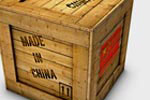Cash-strapped companies look to govt support
Updated: 2011-10-14 17:35
(Xinhua)
|
|||||||||||
BEIJING - Tightened monetary policies and banks' preferences of lending to large companies are squeezing out China's small firms as they struggle for financing to maintain production.
"Our company pays nearly 50,000 yuan ($7,860) in interest each month. The company is still short 6 million yuan in liquidity, but banks are unwilling to lend," said Ma Zhanjun, the general manager of a potato-processing company in Jingtai Township of northwest China's Gansu province.
Ma's company is the township's only potato starch processor. Despite an annual production capacity of 20,000 tons, it currently produces only 2,000 tons of starch due to a shortage in funds.
He resorted to borrowing a total of 1 million yuan from private lenders to buy potatoes, but these loans have come at a hefty price.
"At first, the interest rate was 1.5 percent per month, but it has risen to 2 percent. Our profits are becoming thinner. We are having a tough time," Ma said.
Ma's company is one of many small firms in China relying on private creditors for much-needed cash to stay afloat.
An investigative report conducted this year by the National School of Development of Peking University showed that more than half of nearly 2,000 small firms -- firms with annual sales revenues below 30 million yuan -- surveyed in eastern Zhejiang Province relied on private lending to survive, and only 15 percent could access bank lending.
At least 80 cash-strapped businesspeople in the city of Wenzhou have committed suicide or gone into hiding to invalidate more than 10 billion yuan in debt owed to individual creditors pooled from the private lending market, according to a Xinhua investigation.
The government has become increasingly concerned about the well-being of small businesses. Small businesses create about 80 percent of the jobs in the world's second largest economy, which is currently facing the dilemma of controlling a stubbornly high inflation rate while maintaining stable economic growth.
The State Council, or China's Cabinet, on Wednesday pledged stronger financial and fiscal support to small- and micro-sized businesses by reducing their tax burdens and encouraging banks to increase loan support for small firms.
The Cabinet's fiscal support measures for small firms include raising the tax threshold for corporate value-added taxes and business taxes, extending a policy to halve business income taxes by another four years, and forgiving banks' stamp tax on lending contracts with small firms for three years.
"Tax reductions are particularly important to small firms on what already are thin profits. Structural tax reduction is also necessary in China considering the government's fiscal income growth has been much faster than economic growth in recent years," said Lu Zhengwei, an economist with Industrial Bank.
Zhu Jianfang, the chief economist with CITIC Securities, estimated that small firms will be exempt from paying at least 6 billion yuan in taxes each year with the extension of the policy to halve business income taxes. The Chinese government first began cutting business income taxes for small firms with annual taxable income below 30,000 yuan at the start of 2010.
According to the State Council, banks should increase credit support for small businesses, and lending to small firms whose credit lines are below 5 million yuan should grow at a rate no lower than the average loan growth of the country's banks.
Small financial institutions that meet the loan growth target for small businesses could be subject to required reserve requirements below the 21 percent currently required for major banks, the statement said.
Commercial banks are also prohibited from charging fund management fees, financial consulting fees and other unreasonable fees for their services to small firms.
Sources with the Bank of China said that the bank plans to lend 120 billion yuan to small firms this year, and lending growth to small companies will be 30 percentage points higher than its average lending growth.
The Agricultural Bank of China announced Thursday that its Wenzhou branch plans to lend at least 10 billion yuan this year. It also promised that new lending would give priority to small firms.
The Chinese government also aims to boost the scale of special funds designated for small- and medium-sized enterprises. Data from the Ministry of Finance (MOF) showed that these special funds have totaled 43.81 billion yuan since 1999. In 2009 and 2010, these funds amounted to 23.32 billion yuan.
"The policies have come in time, especially the fiscal polices which can directly benefit small firms by reducing their taxes and offering them a better environment for development," said Liu Shangxi, deputy chief of the Research Institute for Fiscal Science under the MOF.
Ma Zhanjun is not totally confident about the future of his company, but he said the government support offers a glimmer of hope.
"It is as if we are living in the dark night before the dawn, but I believe that if these polices are put in place we will be able to see the dawn soon," Ma said.













